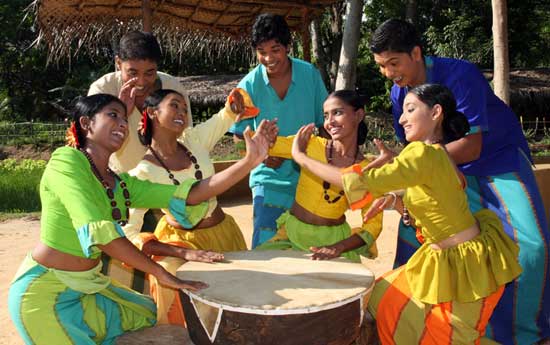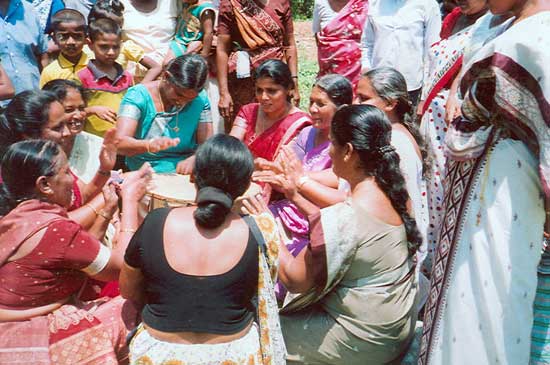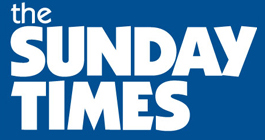Raban rhythms, keeping the heartbeat of avurudu alive
The sounds of the raban playing echoe through towns and villages across the country on New Year’s day (April 14 this year) heralding the dawn of an auspicious time for the country and its people, a tradition that goes back centuries. While New Year celebrations have changed over the years, raban playing remains a much-loved activity on the day, with mostly women at the forefront beating the drums to the rhythms of yore.
The type of wide topped raban played during the New Year is known as banku (bench) raban. It is also known as maha beraya, as it’s the biggest among the several types of drums in Sri Lanka with a diameter from 24 to 48 inches. The banku-raban is played while seated on low benches around it in a circle with two or more people playing it with their hands.

Playing raban: A cultural activity which has become a part of the tourism promotion
According to an article titled Raban-seelam (raban play) and its music by C. De S. Kulatillake published in the journal of the Royal Asiatic Society in 1985, both banku-raban and ath-raban, (hand raban) are made of goat-skin with the skin fitted on to the rim made of jak-wood by flat-headed pins.
It is believed that the raban was introduced to Sri Lanka from Southeast Asian nations such as Thailand where it is known as the Rammana and Malaysia where it is known as reban or raban. The raban does not appear in any list of Indian music instruments, according to Mr. Kulatillake.
The origin of raban-play in Sri Lanka has been traced to the reign of King Vijayabahu (1155-1100 AD) with the raban being played at his wedding for the first time.
The sounds of the banku-raban are a set of metro-rhythmic phrases or raban pada. One in the raban playing group recites the pada and plays the beat to match what was recited together with the others seated around the drum. The raban is usually played with the flat of the palm but, to show off their skills, some play this instrument even with their knuckles and elbows.

Women at the forefront: Beating the drums to the rhythms of yore
“In its role of entertaining music, the banku-raban presents hardly any score of songs. Instead, there are the raban-pada, a set of metro rhythmic phrases with no clear meaning but sung to illustrate the rhythm played,” says Mr. Kulatilake. Some raban pada is made up as the drummers play along with the audience joining in while others have been passed down through generations.
During the New Year, banku-raban is played by different groups each competing to outdo the other with the vigour and tunes they play, thus adding to the excitement and joy of the festivities.
The raban pada can be compared with the nonsense verse, or nonsense poetry, popularised by poets such as Edward Lear, which are light-hearted and whimsical forms of verse that uses made-up words and silly situations to create humour and amusement.
One such example of a raban pada is this popular beat:
Ran thambili gas dekai (two trees of golden king coconut)
Gon thambili gas dekai (two trees of red dwarf coconut),
Gas dekata mal dekai (two flowers on the two trees),
Mal dekata gedi dekai (two nuts on two flowers).
Another one that many are familiar with is this one:
Egoda godeth raththaran (there’s gold on that bank(of a river),
Megoda godeth raththtaran (there’s gold on this bank),
Egoda godeth – Megoda godeth ( on this bank and that bank),
Athek barata raththaran ( an elephant’s weight worth of gold).
In the present day, playing raban is a cultural activity which has become a part of the tourism promotion campaigns in the country during the Sinhala and Tamil New Year season. Though the number of expert raban players is dwindling, the interest in this unique Sri Lankan activity is encouraging with youngsters taking an interest in learning how this traditional musical instrument is played thus helping preserve it for the future. Popular artist, Billy Fernando released a whole album based on raban pada some years ago, which also helped ignite interest among a younger generation of Sri Lankans in traditional folk songs.
Raban playing is an essential part of the Sinhala New Year celebrations, one that brings people together as they mark the dawn of another New Year.
Searching for an ideal partner? Find your soul mate on Hitad.lk, Sri Lanka's favourite marriage proposals page. With Hitad.lk matrimonial advertisements you have access to thousands of ads from potential suitors who are looking for someone just like you.


